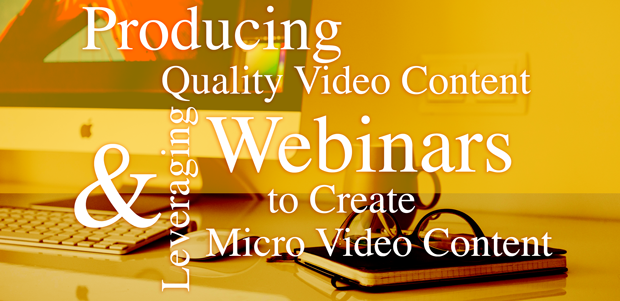Video content can be a powerful tool for your business or organization. The ability to have your message out there, able to be seen by anyone with an Internet connection is intoxicating. If you do your job well, you will end up with compelling content that puts your message in front of millions of eyes. Unfortunately, there is also a downside to this visibility. If you produce poor quality content, your mistakes can be seen and scrutinized by the very audience you hope to reach.
Producing Quality Video Content
Producing high-quality video content is not terribly difficult, but it does require that you pay attention to three key areas:
- Equipment
You do not need much equipment to produce quality videos. You do not need a high-end, professional style camera to make good videos. An inexpensive, consumer style camera is all you need, especially when you are getting started. In fact, many of today’s consumer still cameras can shoot HD quality video. It you are distributing videos online, this is more than adequate. Add a decent microphone and an inexpensive tripod, and you can be ready to shoot great-looking video for well under $500. Some people are even making great-looking videos on smartphones. This may seem like a good way to go, but these tools are better suited to experienced videographers who know how to get around the limitations of the platform.
- Software
If you will be creating your videos on a computer, you will need some video editing software. Many cameras include video editing software, and Windows and Apple both include basic video editing software.
- Technique
Good technique is actually much more important than equipment and software. No matter how much you spend on equipment, poor technique will always lead to poor results. Video production is divided into two phases, Writing / Planning and Filming / Editing.
In the Writing / Planning phase, the task is to script what will be said, and what footage you will need to complete the project. You must also plan for any props, charts, graphics, wardrobe and music you plan to include. Be sure that everyone knows the parts they are playing and plan to have at least one run-through before the actual filming.
If you have done your job correctly, the Filming / Editing phase should go quickly and easily. Be sure that you set the camera up to catch all of the action. Background noise can easily ruin your video; keep things quiet on the set so your microphone picks up only the sound and dialogue you are looking for. Consider getting multiple takes of any complex shots; it will be much more difficult to replicate a shot later if you find a problem. For a short video, you should not need much editing. Start by adding any graphics you have so that you can get the length of your video correct. Use background music appropriately to give your videos a professional look.
Once you have created your video content, your next step is distribution. We will cover this step in the next article.
